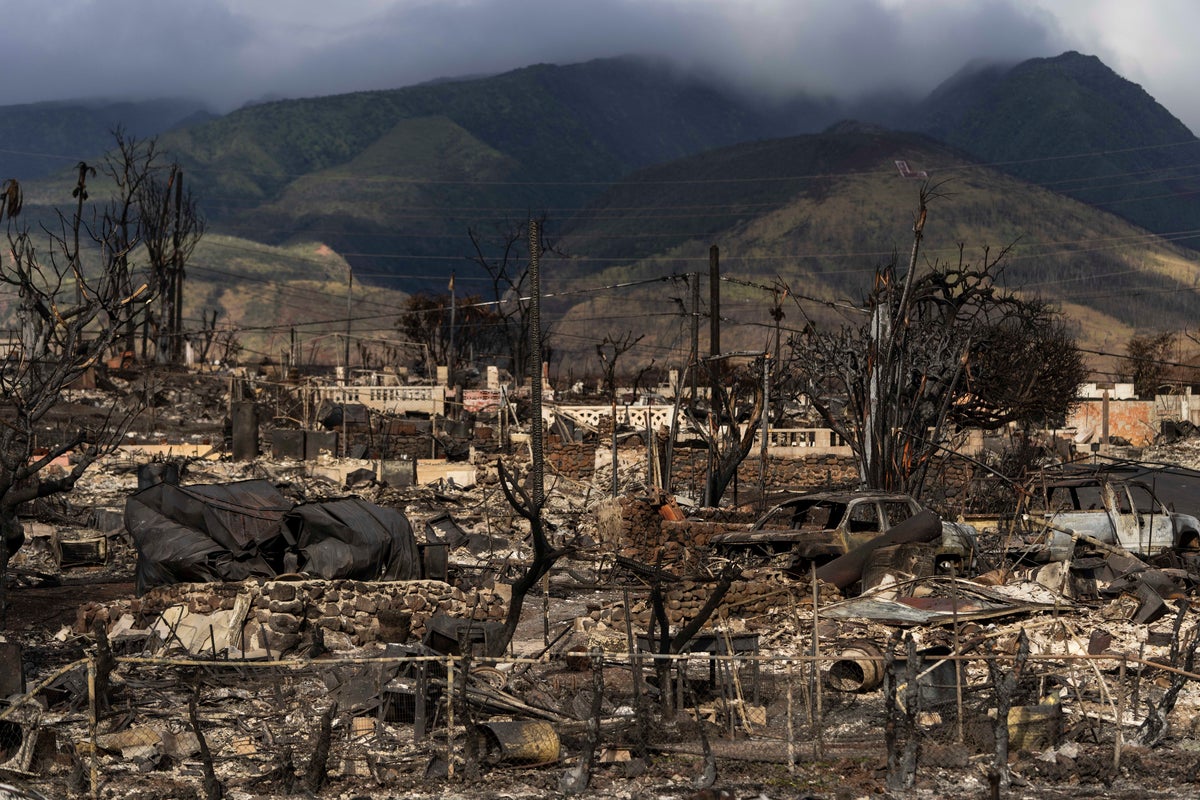
Your support helps us to tell the story
Unemployment and poverty are up and incomes are down among Maui wildfire survivors more than a year after a deadly blaze leveled historic Lahaina, a report published Tuesday found.
The poverty rate among survey respondents more than doubled since the August 2023 fires, the University of Hawaii Economic Research Organization, or UHERO, said. Incomes dropped by more than half for almost 20% of those who answered questions, the report said.
“These are quite staggering findings,” said Daniela Bond-Smith, a research economist at UHERO and one of the report’s co-authors.
The report is based on survey responses from 402 people who lived, worked or owned businesses in West Maui and Kula at the time of the wildfires. Respondents were generally representative of the 12,000 residents and 6,000 people who commuted to these areas before the fires, researchers said. There was a higher share of low-income individuals among participants but not to a degree that would overturn the report's conclusions, Bond-Smith said.
Researchers plan to survey people in this demographic monthly for the next two years.
The results found 29% of fire-affected households now live in poverty. That’s more than twice the percentage before the fires and three times higher than the Maui County average.
Fewer survivors are working and those who have jobs are working fewer hours. Only 3.5% said they were working more hours than before the fires while the unemployment rate jumped from 2.3% to 14.2%.
The shift is particularly pronounced in the tourism industry, Maui’s biggest employer. Researchers said fewer than half of those who had full-time jobs in tourism still do. More than 20% are now unemployed, retired or not looking for work.
One factor, said Trey Gordner, UHERO data scientist and report co-author, is that the number of travelers to Maui continued to be “very much below” pre-fire levels.
On housing, nine out of ten respondents lost their homes. In the aftermath, the survey found survivors were paying more rent for smaller dwellings. They also had less income coming in to pay for it.
A looming challenge: one in three respondents who are now living outside West Maui want to move back next year. Yet only 700 new temporary housing units are being built with funds from the state, county and nonprofit organizations.
“We wanted to draw that out and emphasize that there's a real mismatch," Gordner said.
Maui Mayor Richard Bissen has proposed legislation that would add some 2,200 units to West Maui's housing supply by forcing the conversion of some short-term vacation rentals to long-term rentals, but the measure is still under consideration.
To date, official data on fire survivors was limited to those who lost their homes or was folded into broader statistics for all of Maui County.
Gordner said it was important to also study those who worked and owned businesses in fire-stricken communities to understand the true extent of the disaster and to identify gaps in government and nonprofit assistance.
The survey was offered in six languages: English, Spanish, Tagalog, Ilocano, Tongan and Vietnamese. Government agencies and nonprofit organizations helped recruit participants. Each respondent received at $20 gift card for the first survey and a $10 gift card for each follow up monthly survey.







